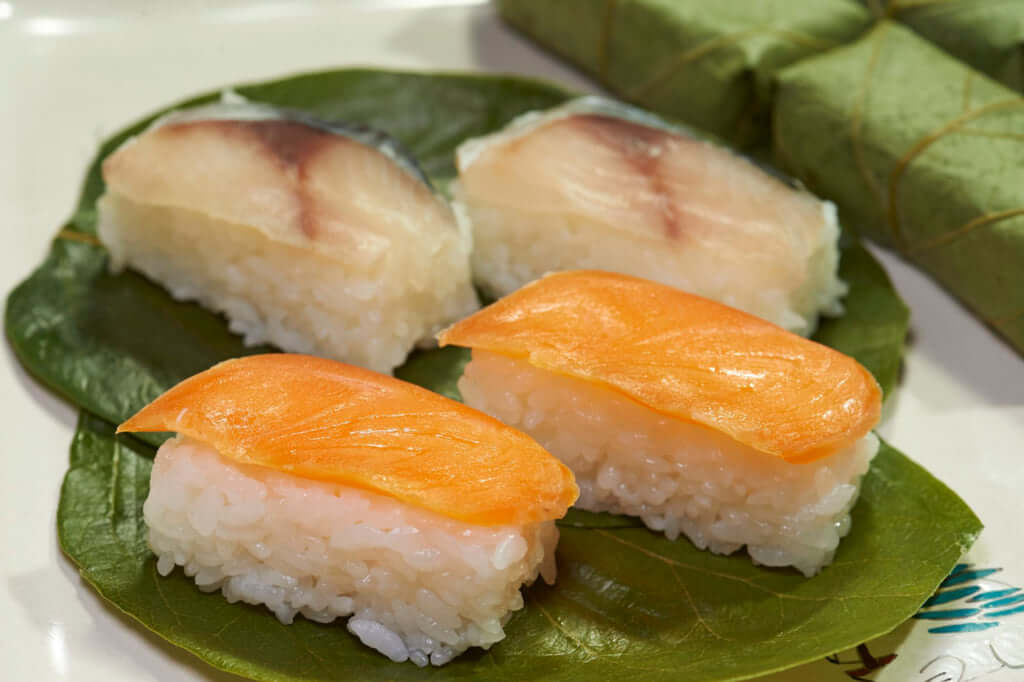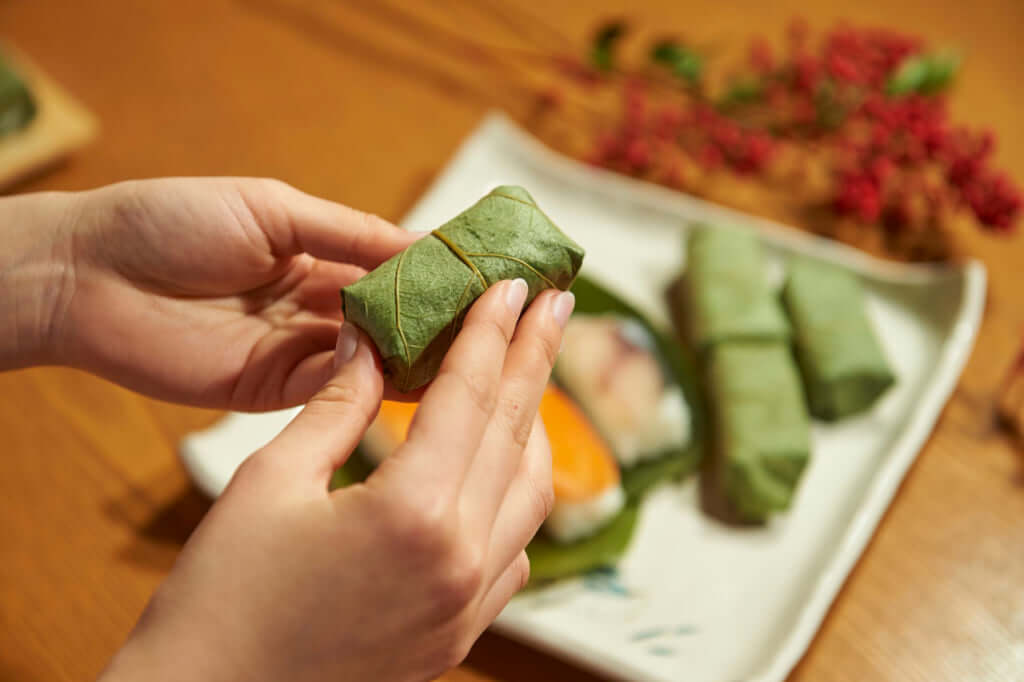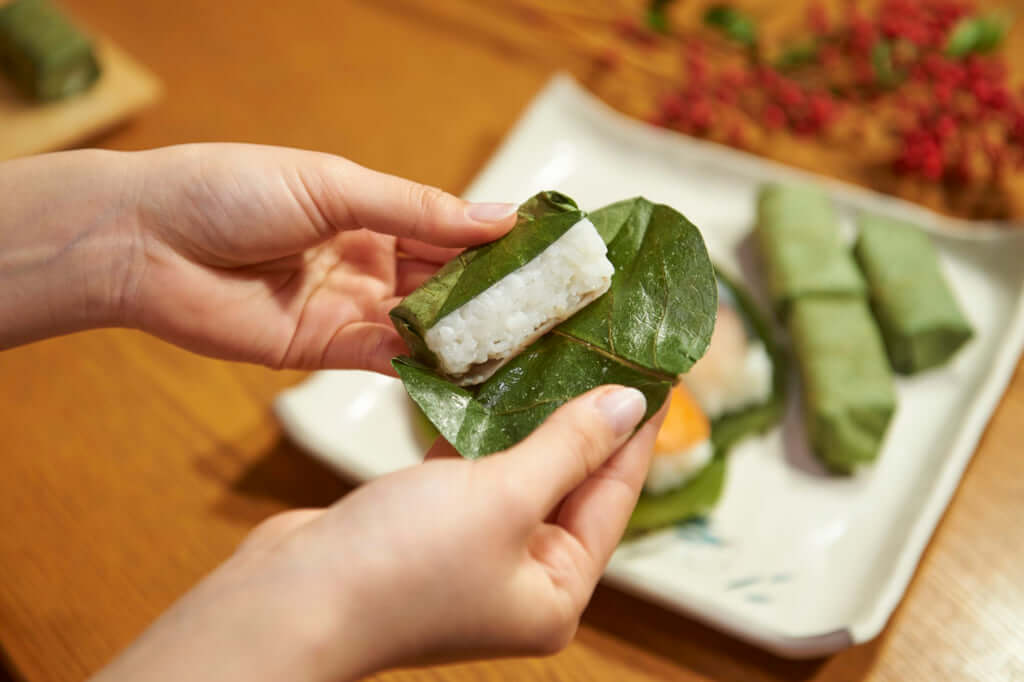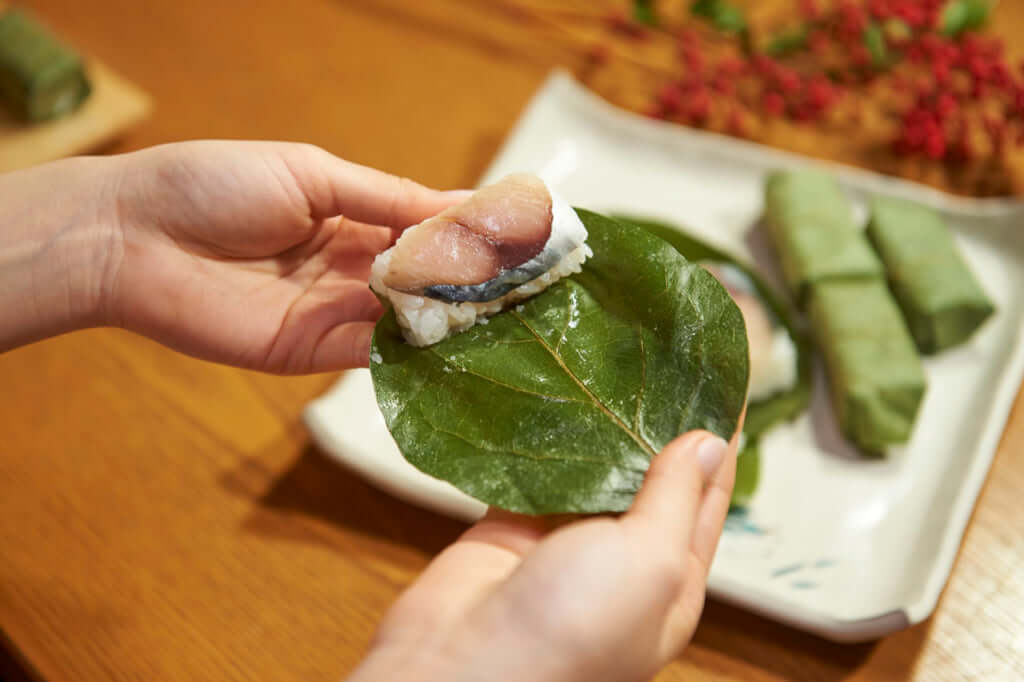Sushi from Nara, Wrapped in a Delicate Persimmon Leaf
Used originally to preserve the freshness of raw fish, this technique has become a staple food from the former imperial capital.

©JNTO
Kakinoha-sushi is a type of sushi that, in terms of shape at least, is no different from the rest: it consists of a slice of raw fish on top of some rice. The difference, however, becomes clear when it’s eaten: it has a lightly sugary taste, a result of the contact with the leaf it’s wrapped inside.
This wrapping practice dates back to the Edo period, where the trick was used to preserve sushi without covering it in salt, which quickly made it inedible. As Nara is relatively far from the sea, people had to find a way to preserve food for the journey to what was the capital of Japan between 710 and 784.
Sushi with a delicate sweet flavour
This tradition of using leaves continues today, due in part to its aesthetic quality but also to the taste it creates. There are all kinds of kakinoha-sushi, but it’s customary for them to be made from salmon or mackerel, with the latter absorbing the flavour from the persimmon leaf. The packaging is elegant, too: sushi from Nara is placed in a wooden box before being enjoyed. And there’s one final detail, and an important one at that: the persimmon leaf is not for eating, instead serving only as a casing.
This sushi is primarily found in Nara and the surrounding areas, but can also be found in some big shops in Tokyo, such as Tokyo Foodshow in Shibuya district.
To taste kakinoha-sushi in Nara, head to Tanaka restaurant, a local institution.

©JNTO

©JNTO

©JNTO

©JNTO
TRENDING
-
A House from the Taisho Era Reveals Its Secrets
While visiting an abandoned building, Hamish Campbell discovered photographs the owner had taken of the place in the 1920s.

-
The Taboo-Breaking Erotica of Toshio Saeki
The master of the 1970s Japanese avant-garde reimagined his most iconic artworks for a limited box set with silkscreen artist Fumie Taniyama.

-
With Meisa Fujishiro, Tokyo's Nudes Stand Tall
In the series 'Sketches of Tokyo', the photographer revisits the genre by bringing it face to face with the capital's architecture.

-
Masahisa Fukase's Family Portraits
In his series ‘Family’, the photographer compiles surprising photos in which he questions death, the inescapable.

-
Hajime Sorayama's Futuristic Eroticism
The illustrator is the pioneer for a form of hyperrealism that combines sensuality and technology and depicts sexualised robots.





